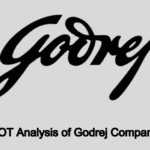
Learn the basics of debt mutual funds
Usually, investors tend to focus primarily on equity funds when investing in mutual funds. However, debt mutual funds form an integral part of a well-diversified mutual fund investment portfolio. These funds are designed to generate regular income and preserve capital and invest in invest in fixed-income securities, such as government bonds, corporate bonds, treasury bills, and money market instruments. And to benefit from the features of debt funds, it’s essential to first understand its basics.
What are debt mutual funds?
Debt mutual funds are investment products that pool money from multiple investors to invest in debt instruments like bonds. Unlike equity mutual funds that invest in the stock market, debt funds focus on generating income by investing in fixed-interest securities. The income generated from these investments is distributed among the fund’s investors in the form of regular dividends or capital appreciation.
Who should invest in debt mutual funds?
Debt mutual funds are suitable for a wide range of investors, including those with a low-risk appetite, retirees seeking regular income, or individuals with short- to medium-term investment horizons.
Investors who prioritise capital preservation, steady income, and seek lower volatility in their investments tend to find debt funds appealing. Moreover, debt mutual funds can act as a hedge against equity investments and can help diversify the overall investment portfolio.
Types of debt mutual funds in India
Here’s a brief classification of debt mutual funds in India as per SEBI.
| Category | Investment Objective | Average Maturity | Underlying Securities |
| Liquid funds | High liquidity and stable returns | Up to 91 days | Very short-term money market instruments |
| Ultra short duration funds | Slightly higher potential return with low interest rate risk | 3 to 6 months | Debt and money market instruments |
| Low duration funds | Higher yield than liquid and ultra-short duration funds | 6 to 12 months | Debt securities with a Macaulay duration of 6-12 months |
| Short duration funds | Generate income with relatively low interest rate risk | 1 to 3 years | Debt securities with a Macaulay duration of 1-3 years |
| Medium duration funds | Balance between income generation and interest rate risk | 3 to 4 years | Debt securities with a Macaulay duration of 4-7 years |
| Long duration funds | Generate income with higher interest rate risk | Over 7 years | Debt securities with a Macaulay duration exceeding 7 years |
| Dynamic bond funds | Flexibility to adjust portfolio duration based on market conditions | Varies | Debt securities across various durations |
| Corporate bond funds | Invest in corporate bonds | Varies | Corporate bonds |
| Banking and PSU funds | Invest in debt instruments of banks and public sector units | Varies | Debt instruments of banks and public sector units |
| Gilt funds | Invest in government securities | Varies | Government securities |
| Credit risk funds or credit opportunity funds | Invest in lower-rated debt securities | Varies | Lower-rated debt securities |
Do note that there may be sub-categories within each of these debt fund categories. It’s essential to carefully review the scheme documents or consult with a financial advisor to make informed investment decisions based on your investment goals and risk appetite.
Wrapping up
When selecting a debt fund to invest in, it’s crucial to assess factors such as your investment objectives as well as the fund’s risk-return profile, credit quality, liquidity, and expense ratio. It’s also important to align the fund’s average maturity with your investment horizon, understanding the tax implications, and regularly monitor the fund’s performance in order to optimise outcomes.


















Average Rating